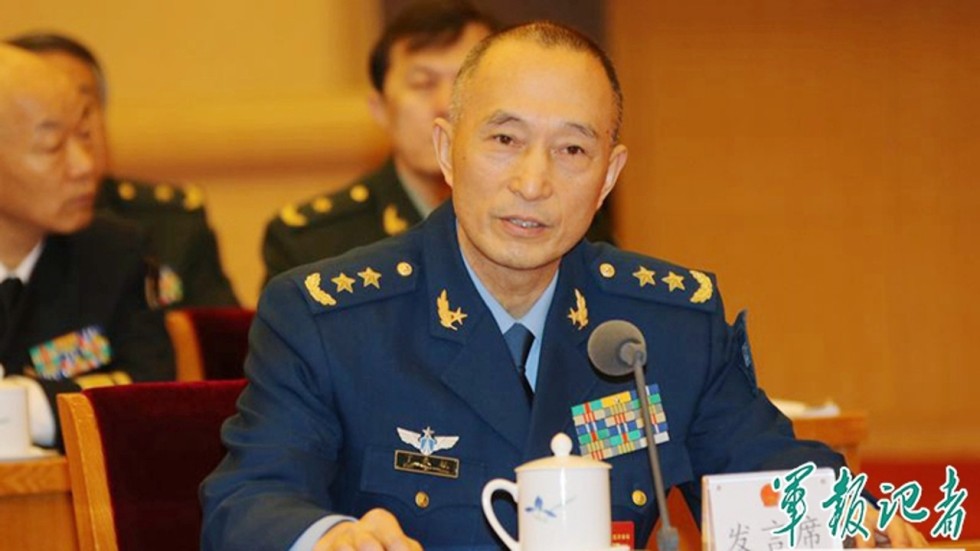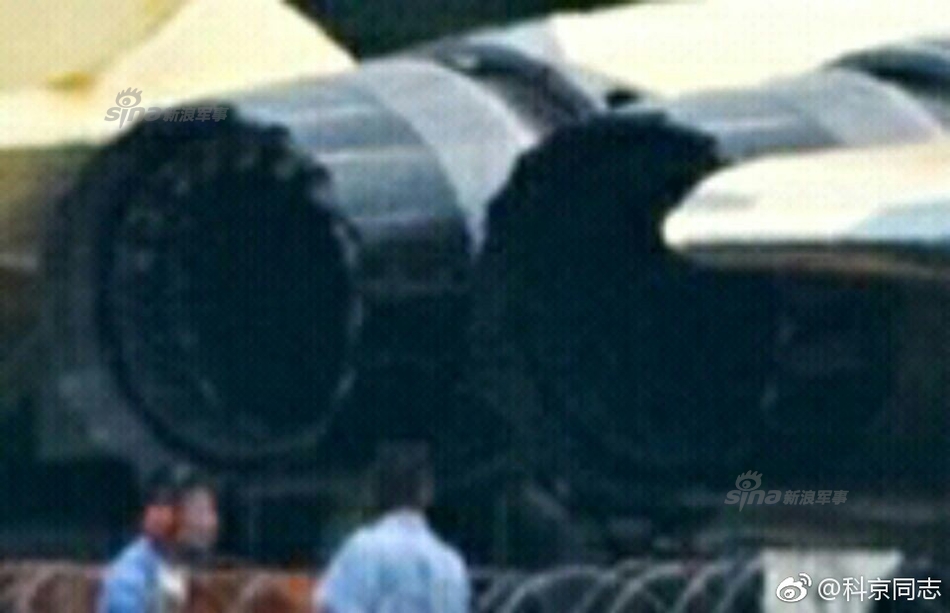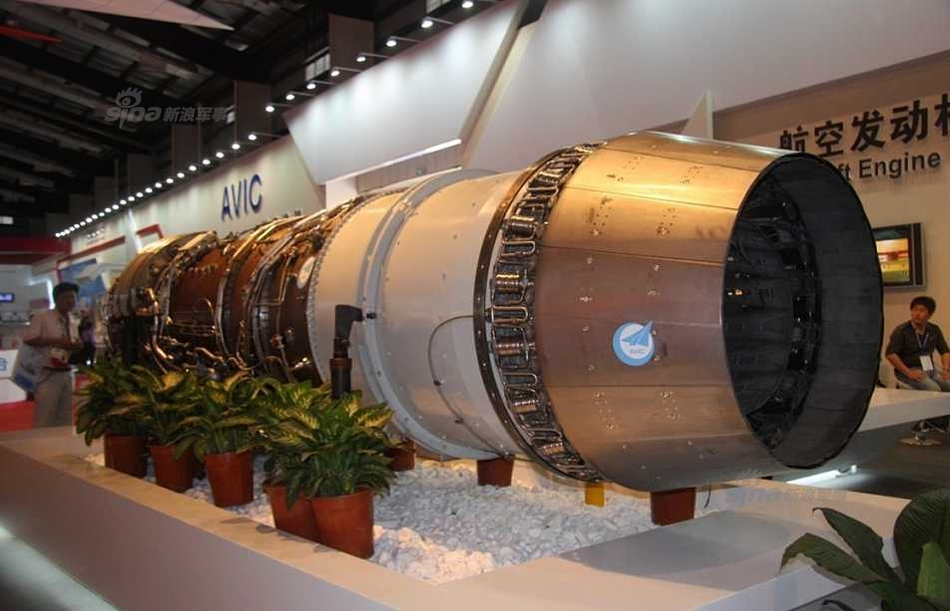You are using an out of date browser. It may not display this or other websites correctly.
You should upgrade or use an alternative browser.
You should upgrade or use an alternative browser.
PLA Air Force news, pics and videos
- Thread starter Jeff Head
- Start date
Hendrik_2000
Lieutenant General
More long range mission said the new chief of Air Force that portend new bomber
All these new commanders of Army and Airforce serve in Fujian at one time
China’s new air force chief lays out long-range mission
Military wing must broaden horizons from homeland defence to meet changing security needs, commander says

China’s new air force commander said the military must build up strength in long-range missions to realise its goal of becoming a “strategic” airborne unit, state media reported on Sunday.
Speaking publicly for the first time since taking over as chief of the People’s Liberation Army Air Force, Lieutenant General Ding Laihang said the military wing had to be strong in attack and defence both in the air and in space, moving on from its previous focus on homeland defence, China National Radio reported.
Ding made the comments during an inspection of the PLA Air Force Aviation University in Changchun, Jilin province, on Friday.
He was widely tipped last month to become head of the 420,000-strong air force, and his appointment was finally confirmed on the weekend when the defence ministry posted a report online about the inspection.
Addressing about 1,000 new trainee pilots on the university’s orientation day, Ding said the Chinese air force was undergoing “an unprecedented deep reform”.
He later said the force’s strategic mission relied on being able to “go out” further than before.
“This requires the ability to project power and make strikes over long distances. Exercises on the open seas will become a regular part of training,” Ding said.
He said that as China’s power grew, it had to face more security threats.
“The PLA must provide full, all-out and absolute protection to wherever our national interests extend,” he said.
“The air force is gradually expanding its blue-water training, and its weapons and equipment, communication systems, supplies and aviation search-and-rescue skills must catch up with the mission.”
Ding said the air force had already secured some air corridors for long-distance missions.
Hong Kong-based military commentator Song Zhongping said the Chinese air force still had many weaknesses to overcome before it could project power over big distances.
The biggest needs were more heavy aircraft and a new strategic bomber to replace the H-6K, an outmoded design.
Ding also stressed the need for pilots and aircraft to be able to operate throughout the country.
“From the islands to the plateaus, from the fringes to the extremes of cold and heat, our pilots must be capable of any urgent missions in all sorts of conditions to meet President Xi Jinping’s expectations of the air force,” he said.
Ding was formerly air force commander of the Shenyang Military Region from 2012.
His career overlapped with Xi’s in Fujian province in the early 2000s after he was named chief of staff of the Eighth Corps based in Fuzhou in 2001 and went on that year to lead the air force in the city.
Xi was governor of the province from 2000 to 2002.
Ding graduated from the PLA Air Force Command College. He became president of the college in 2007 and a year later took over as air force chief of staff of the then Chengdu Military Command.
All these new commanders of Army and Airforce serve in Fujian at one time
China’s new air force chief lays out long-range mission
Military wing must broaden horizons from homeland defence to meet changing security needs, commander says

China’s new air force commander said the military must build up strength in long-range missions to realise its goal of becoming a “strategic” airborne unit, state media reported on Sunday.
Speaking publicly for the first time since taking over as chief of the People’s Liberation Army Air Force, Lieutenant General Ding Laihang said the military wing had to be strong in attack and defence both in the air and in space, moving on from its previous focus on homeland defence, China National Radio reported.
Ding made the comments during an inspection of the PLA Air Force Aviation University in Changchun, Jilin province, on Friday.
He was widely tipped last month to become head of the 420,000-strong air force, and his appointment was finally confirmed on the weekend when the defence ministry posted a report online about the inspection.
Addressing about 1,000 new trainee pilots on the university’s orientation day, Ding said the Chinese air force was undergoing “an unprecedented deep reform”.
He later said the force’s strategic mission relied on being able to “go out” further than before.
“This requires the ability to project power and make strikes over long distances. Exercises on the open seas will become a regular part of training,” Ding said.
He said that as China’s power grew, it had to face more security threats.
“The PLA must provide full, all-out and absolute protection to wherever our national interests extend,” he said.
“The air force is gradually expanding its blue-water training, and its weapons and equipment, communication systems, supplies and aviation search-and-rescue skills must catch up with the mission.”
Ding said the air force had already secured some air corridors for long-distance missions.
Hong Kong-based military commentator Song Zhongping said the Chinese air force still had many weaknesses to overcome before it could project power over big distances.
The biggest needs were more heavy aircraft and a new strategic bomber to replace the H-6K, an outmoded design.
Ding also stressed the need for pilots and aircraft to be able to operate throughout the country.
“From the islands to the plateaus, from the fringes to the extremes of cold and heat, our pilots must be capable of any urgent missions in all sorts of conditions to meet President Xi Jinping’s expectations of the air force,” he said.
Ding was formerly air force commander of the Shenyang Military Region from 2012.
His career overlapped with Xi’s in Fujian province in the early 2000s after he was named chief of staff of the Eighth Corps based in Fuzhou in 2001 and went on that year to lead the air force in the city.
Xi was governor of the province from 2000 to 2002.
Ding graduated from the PLA Air Force Command College. He became president of the college in 2007 and a year later took over as air force chief of staff of the then Chengdu Military Command.
Interesting points in this China Military Online article ...
Air Force set on long-range mission
Source: China Daily Editor: Li Jiayao Time: 2017-09-05
New commander pledges more exercises with foreign militaries
The Chinese Air Force will continue to transform from a territorial air defense unit into an extended arm capable of protecting national interests wherever they exist, according to its new commander.
Lieutenant General Ding Laihang said that as China becomes stronger and security challenges continue to emerge, the military is striving to ensure it can safeguard national interests anywhere in the world.
"In the past, our strategies and guidelines focused on territorial air defense. Now we have been shifting our attention to honing our ability in terms of long-range strategic projection and long-range strike," he told China National Radio for an article published on Sunday.
"A strategic force must go out," he said. "We will continue to carry out long-distance training over oceans."
Ding's predecessor, General Ma Xiaotian, who stepped down in late August, had earlier said the Air Force "cannot simply guard on land and not fly out" in response to questions on Japan's concerns about the People's Liberation Army's "increasing activities" over the Sea of Japan.
Ma said it is normal for the PLA Air Force to conduct training exercises over the sea, adding that "the Sea of Japan is not Japan's sea".
Not long after Ma's comments, six Chinese H-6K bombers flew through the Miyako Strait between the islands of Okinawa and Miyako in the East China Sea and approached the Kii Peninsula. This was the first time the PLA Air Force had flown that route, Japanese media reported.
In Sunday's article, Ding pledged that the Air Force will intensify its realistic aerial combat drills and continue to carry out exercises with foreign militaries.
Wang Yanan, editor of Aerospace Knowledge magazine, said the Air Force will have two priorities as it moves toward becoming a capable strategic force.
"First, as a lot of new aircraft have been delivered, it must figure out how to make these new planes combat-ready as soon as possible and how to maintain them, as they are different from the old types," he said.
"For instance, the Air Force now has Y-20 heavy-lift transport jets, but it needs to design methods and gain experience when it comes to airdropping armored vehicles," he said. "Owning advanced weapons doesn't equate to being able to use them well."
The second priority is that the Air Force must improve its capabilities in coordinating different types of aircraft and air defense missiles in an operation, and also nurture joint operation capabilities with other services, like the PLA Navy and Rocket Force, Wang added.
Citing the new-generation strategic bomber that is under development, Wang suggested the Air Force start studying the plane's usage in future warfare and work closely with designers to make sure the engine and flight-control system are good and reliable.
New unmanned AV-500 helicopter ...
Unmanned attack helicopter unveiled
(China Daily) 08:20, September 15, 2017
China is promoting an unmanned reconnaissance/combat helicopter in the international market, further expanding the scope of its military drones offered to foreign buyers.
Aviation Industry Corp of China, the State-owned aircraft giant, has put its AV500W unmanned autonomous helicopter on display at the fourth China Helicopter Expo that opened on Thursday in Tianjin.
The 7.2-meter-long aircraft, developed and produced at the AVIC Helicopter Research and Development Institute in Jingdezhen, Jiangxi province, has a maximum takeoff weight of 450 kilograms, a maximum speed of 170 kilometers per hour and a flight ceiling of 4,000 meters, according to the institute.
The helicopter is capable of carrying 120 kg of weapons and equipment. Its reconnaissance version can remain aloft for eight hours while the reconnaissance/combat model is able to fly four hours.
All of the military drones China has offered to the international market have been fixed-wing models, making the AV500W the first Chinese unmanned military helicopter available in that market, observers said.
An armed AV500W typically carries four air-to-ground missiles, which use radar homing technology for guidance. Each missile weighs 8 kg and can hit a target 5 km away, the institute said. It also can carry bombs or a machine-gun pod.
The helicopter features good mobility, penetration capability and a high level of automation and has a stealth design. A typical mission would be a precision attack on light-duty armored vehicles and personnel, the institute said.
Jiang Taiyu, one of the chief designers of AV500W, said the aircraft fired weapons during its maiden flight test in August.
"The helicopter is able to take off and land on almost any landform including plateaus and canyons. It can operate in cold and tropical environments. It will be useful in border patrols, counterterrorism operations and low-intensity conflicts because it can carry out very-low-altitude penetration and keep hovering for a while," he said.
The designer added that all of the helicopter's tests will be finished before the end of this year and it will be ready for mass-production in 2018.
"Several nations have told us that they are interested in this aircraft. This is because there are a very small number of unmanned helicopters in the world that can perform strikes, while demand for such types is not small," Jiang said. He said only the United States and Israel have developed unmanned armed helicopters, such as the Northrop Grumman MQ-8B Fire Scout in the US.
The AV500W's target market will be countries dealing with terrorism such as in the Middle East, he said.
Fang Yonghong, director of unmanned aircraft technology at AVIC Helicopter Research and Development Institute, said many nations in Europe, Africa and the Middle East face huge pressure to ramp up their counterterrorism efforts, so they need good, affordable equipment such as the AV500W.
More than 400 helicopter producers and parts suppliers from 22 nations and regions — such as the US, Russia and France — are taking part in the helicopter expo, the largest of its kind in China. They brought 98 aircraft to the event. Helicopters from the People's Liberation Army Ground Force and AVIC conducted flight demonstrations at the opening ceremony on Thursday morning.
I'm not sure why they keep referring the FC-31 as J-31 ...
Chinese fighter jets to control drones in battle by satellite in five years: experts
Source
Editor
Zhang Tao
Time
2017-09-20
China's fighter jets will be capable of remotely controlling drones by satellite within five years, experts said Tuesday.
China's fifth-generation stealth fighters J-20 and J-31 will be capable of mobilizing the drones for battle by serving as their control platforms, Xu Yongling, a retired PLA chief test pilot and an expert at the Chinese Society of Aeronautics and Astronautics, said at a recent defense seminar, Cankaoxiaoxi newspaper reported.
Xu explained to the Global Times Tuesday that "China could achieve the technology within five years. Chinese fighter jets will have the ability to control drones in real time in battles in the Indian Ocean, the west Pacific Ocean and South China Sea."
Manned fighter jets can easily remotely control a small drone fleet with artificial intelligence (AI). But satellites are needed for fighter jets to have the flexibility of controlling drones and alter their mission in changing situations, according to Xu.
The J-20 and J-31 could remotely control up to six large drones armed with missiles or a fleet made up of smaller drones if they are equipped with AI, Fu Qianshao, another air defense expert, said.
It would be better for single-pilot jets to be equipped with a computerized co-pilot to process information from artificial sensors, Fu told the Global Times.
The AI technology is much more likely to be first used in twin-pilot aircraft, like third-generation fighter jets such as the J-10 and J-16. One pilot would process the data transmitted from drones, while the other pilot focuses on the manned mission, Fu said.
However, Xu admitted that the technology poses a problem. "It's unknown if the fighter jets can reconfigure the missions of the drones in time with keyboard commands. Current drones are all programmed, which means their missions cannot be altered in the air."
US Air Force Chief Scientist Gregory Zacharias was quoted by US magazine the National Interest in July as saying that F-35s, F-22s and other fighter jets will use AI to control nearby drone wingmen in high risk areas as well.
Jura The idiot
General
Jura The idiot
General
oops, the helmet's reflection confused me at first, about one second before this view:Cool ... but without that additional loop You added on top.

I thought I had seen "a flip" which isn't there, sorry LOL!
Chinese Bomber Flights Around Taiwan: For What Purpose ?
After conducting two strategic bomber flights around Taiwan in late 2016, Beijing in the last two months has significantly stepped up its operational tempo with at least another five flights circumnavigating the island, the occurred on Aug. 12. An easy explanation for this unprecedented display of military force is that China is more routinely employing the Xian H-6K long-range bomber to ratchet up pressure on Taiwanese President Tsai Ing-wen due to her the “1992 Consensus.” The consensus is allegedly an agreement on “One China,” but has differing interpretations in China and Taiwan. This , however, is overly simplistic. Coercing Taiwan was likely an important part of Beijing’s calculus, but the core objective appears to be strengthening the People’s Liberation Army’s (PLA) conventional strategic deterrence. China seeks to enhance the People’s Liberation Army Air Force’s (PLAAF) capabilities and signal Beijing’s will to defend its territorial claims against the U.S. and its regional allies and partners, especially Taiwan and Japan.




